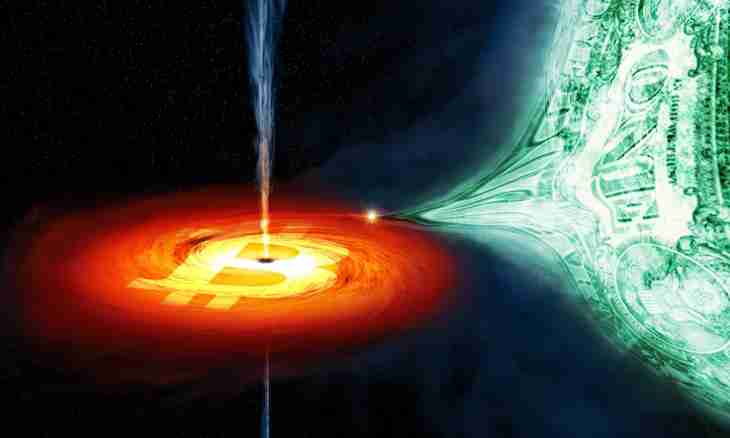Black holes of "middle class" have the mass from 100 to 100,000 solar masses. Holes weighing less than 100 of solar are considered as mini-holes, more than one million solar masses – supermassive black holes.
The black hole is an astronomical area in space and time in which the gravitational attraction strives for infinity. To leave a black hole, objects have to reach the speed much exceeding the speed of light. And as it is impossible, even quanta of the light are not radiated from area of a black hole. Follows from all this that the area of a black hole is absolutely invisible to the observer irrespective of how remotely from him it is. Therefore to find and determine the sizes and mass of black holes it is possible only analyzing a situation and behavior of the objects which are near them.
On the 20th symposium on relativistic astrophysics in Texas which passed in January, 2001, astronomers Karl Gebhardt and John Kormendi showed a method of practical measurements of mass of nearby black holes, the obtaining information on growth of black holes giving to astronomers the chance. By means of this method 19 new black holes in addition to already known at that time 19 were open and studied. All of them are supermassive and have the weight from one million to one billion solar masses. They settle down in the centers of galaxies.
The method of measurements of masses is based on observation of movement of stars and gas on the centers of their galaxies. Such measurements can be taken only at the high spatial resolution which Hubble or NuSTAR space telescopes can provide. The essence of a method consists in the analysis of variability of quasars and addresses of huge gas clouds around a hole. Brightness of radiation of the rotating gas clouds directly depends on energy of x-ray radiation of a black hole. As light has strictly certain speed, changes of brightness of gas clouds are visible to the observer later, than change of brightness of the central source of radiation. On time difference the distance from gas clouds to the center of a black hole is calculated. Together with the speed of rotation of gas clouds also the mass of a black hole is calculated. However this way includes uncertainty as there is no way to check correctness of the end result. On the other hand, the data obtained by this method correspond to dependence between the mass of black holes and mass of galaxies. The classical way of measurement of mass of a black hole offered by Einstein's contemporary Shvartsshild is described by a formula M=r*c^2/2G where r is the gravitational radius of a black hole, with – the speed of light, G – a gravitational constant. However this formula precisely describes the mass of the isolated, unrotative, not loaded and not evaporating black hole. Quite recently there was a new way of determination of mass of black holes which gave the chance to open and study black holes of "middle class". It is based on the radio interferential analysis of jets – the emissions of matter which are formed during absorption by a black hole of weight of the disk surrounding it. Speed of jets can be higher than a half of the speed of light. And as the weight dispersed to such speeds radiates x-ray radiation, it can be registered by the radio interferometer. The method of mathematical modeling of such jets allows to receive more exact values of average mass of black holes.

